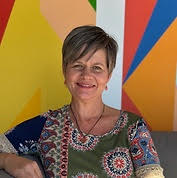
You could say ESG investing came of age in 2018, and it’s about time.
Forty years ago the Institute for Community Economics, led by Robert Swann in Cambridge, Massachusetts, launched the first investment fund with positive criteria. Until that time investment screens used negative criteria– no alcohol or tobacco stocks, for instance.
Today, sustainable investment has evolved from negative exclusion to positive inclusion. Now, 90 percent of institutional investors globally believe ESG (environmental, social and governance) integrated portfolios are likely to perform as well or better than non-ESG integrated portfolios, and 72 percent are evaluating ESG factors to make investment decisions.
They owe a debt to the pioneers. The group led by Swann in the late 1970s crafted a set of criteria that still informs social investment funds today, according to Susan Witt, Executive Director of the Schumacher Center for New Economics.
The board of directors of the Community Investment Fund (CIFund) included, among other early ESG investment luminaries, Robert Zevin, who went on to found the first equity fund with social criteria; George Pillsbury of the Haymarket People’s Fund; Rochelle Korman of the Ms. Foundation for Women; and Wayne Silby, who later founded the Calvert Social Investment Fund.
A movement was born
As Witt explains, the CIFund closed after a year and a half without achieving capitalization, but it had raised the question: “Do you know what your money is doing tonight?” It was a question, she said, that institutional investors could no longer ignore. Early partners of the CIFund, Amy Domini and Hazel Henderson, were exploring their own avenues for socially responsible investment so there was no denying that a movement had been born.Today socially responsible investment has evolved to impact investment, described by the Global Impact Investing Network as “an exciting and rapidly growing industry powered by investors who are determined to generate social and environmental impact as well as financial returns.”
A legacy lives on
The legacy of the Community Investment Fund was clearly evident in 2018. As TriplePundit reported in October, a quarter of U.S. investors now say that an ESG integrated portfolio will outperform a non-ESG portfolio, five times the number who agreed in 2017.That same month, investors and associated organizations representing more than $5 trillion in assets under management petitioned the Securities and Exchange Commission (SEC) to require mandatory ESG disclosure.
In 2018, the old guard was quickly being replaced with new investors: more women investors, particularly millennials, with younger generations driving the fast growth of the “green bond” market and the field of sustainable finance in general, as TriplePundit reported.
The trend was confirmed by Swell Investing’s study concluding that the vast majority of Generation Z and millennial investors are engaged in socially responsible or impact investments, or plan to invest this way in the future.
And in December, at the global climate negotiations in Poland, a record 415 investors managing $32 trillion issued the 2018 Global Investor Statement to Governments on Climate Change calling for the phase out thermal coal, a price on carbon emissions and an end to fossil-fuel subsidies.
Continued momentum for socially conscious funds
The momentum continues. Barron’s third annual performance ranking of the most sustainable, ESG-oriented funds in Morningstar’s database found that securities investors who gravitated toward sustainable companies beat the broad market in 2018, just as they did in 2016 and 2017.And according to Bloomberg’s report of the top 10 socially conscious funds, those funds that bet on companies that perform better on environmental, social or good-governance criteria are one of the fastest-growing asset classes in the U.S. More than 140 ESG funds have launched globally this year, with overall U.S. assets in the space growing to nearly $12 trillion—more than a quarter of all U.S. assets under management.
SDGs are the next investment frontier
Some 38 percent of Fortune 500 companies have publicly announced their alignment with the Sustainable Development Goals (SDGs), as TriplePundit has reported.Given that ESG investing and the United Nations Sustainable Development Goals (SDGs) both focus on integrating sustainability with business strategy, a big prediction for 2019 is that the link between ESG and SDGs is going to be the big push in SRI this year.
For example, Jeff Gitterman of Gitterman Wealth Management said at the 2018 ESG Investing Conference at the UN that the next frontier of ESG investing could be a real focus on “SDG-related companies.”
Linking ESG investment to SDG goals to drive financial support for companies taking positions on social issues is an exciting development in the unfolding brands taking stands story, says TriplePundit’s Editorial Director John Howell.
One of the biggest answers to “what’s next” in ESG investing will be coming soon, as Howell notes in this week’s Brands Taking Stands newsletter, in the form of BlackRock chairman and CEO Larry Fink’s annual letter investors, which will be issued this month.
Last year’s letter calling for the 4,000 companies in which his firm invests to address their social purpose was described as “a watershed moment on Wall Street, one that raises all sorts of questions about the very nature of capitalism.” Fink’s forthcoming 2019 letter is expected to expand upon last year’s benchmark statement.
Image credit: Pixabay

Based in Florida, Amy has covered sustainability for over 25 years, including for TriplePundit, Reuters Sustainable Business and Ethical Corporation Magazine. She also writes sustainability reports and thought leadership for companies. She is the ghostwriter for Sustainability Leadership: A Swedish Approach to Transforming Your Company, Industry and the World. Connect with Amy on LinkedIn and her Substack newsletter focused on gray divorce, caregiving and other cultural topics.














